Swiss outdoor art to put on your ‘must see’ list
Outdoor art has been around in Switzerland for decades. Take Bern’s mysterious Chindlifresserbrunnen with its child eating ogre… More so today, urban art in cities like Geneva and St Gallen plays with the surroundings, inviting people to interact. Outdoor art can be extraordinary and ‘talkative’. And sometimes, it blends into the environment just waiting to be discovered.
Once you start paying attention to outdoor art in Switzerland, your mind will start bubbling over as you imagine just what kind of masterpieces might be hiding around the corner...
Here are nine pieces of outdoor art in Switzerland which you should put on your ‘must see’ list.
A giant silver lady watches over Zurich’s West End.
Just outside the entrance of the hip 25hours Hotel in Zurich, there is a silver woman measuring about 5 metres in height. The statue’s name is Anne-Sophie, and she represents the current young generation as well as the prosperity of her home - Zurich West. She has been standing there since October 2014.
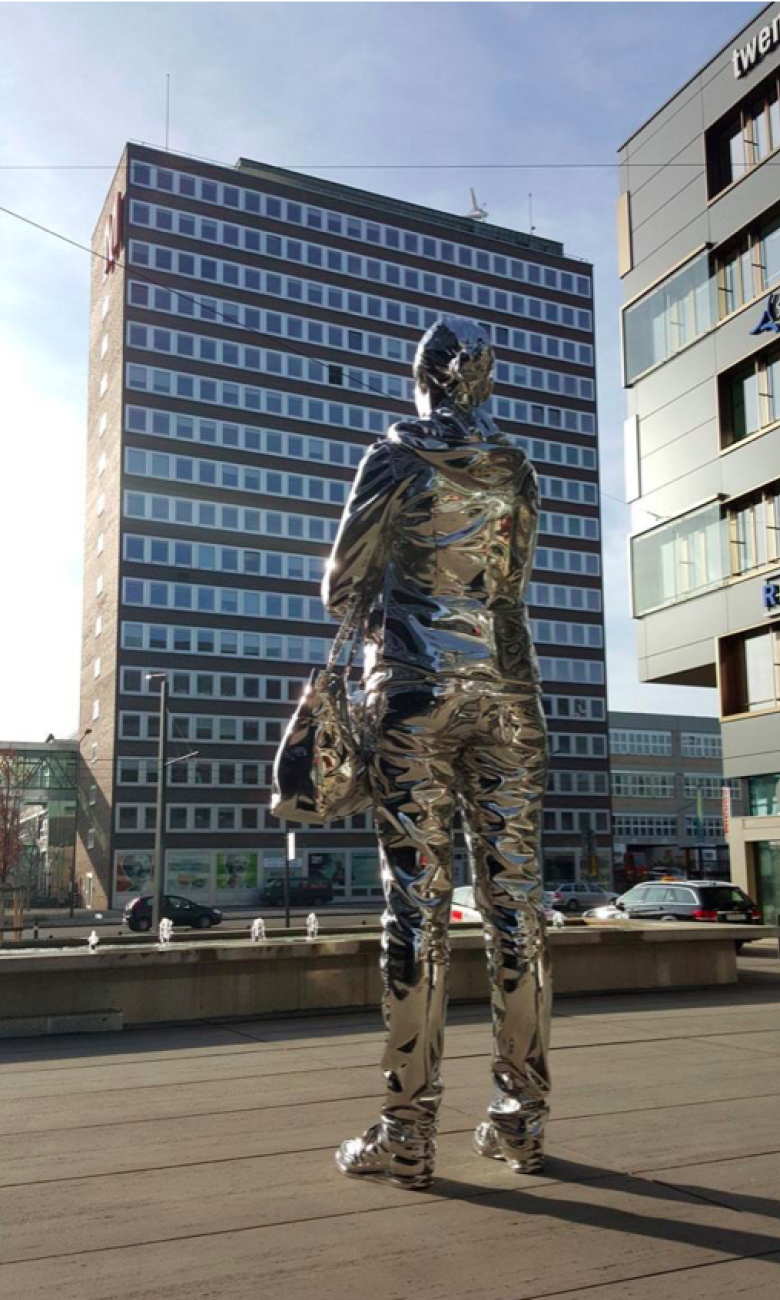
Alex Hanimann, an artist from St Gallen, based the sculpture on a real model who at that time was a student of music at the Zurich University of the Arts (ZHdK). What many do not know is that Anne-Sophie (the statue) has an older sister, Vanessa, whose statue gives a special gloss to the cantonal school of Heerbrugg SG.
A bear balances above the former bear pit in Bern.
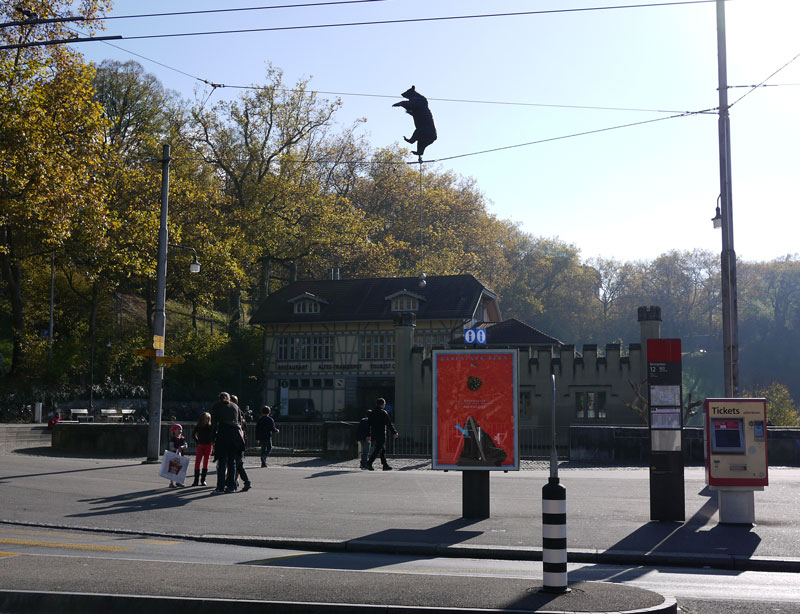
If you have been to Bern, you have probably visited the new bear park along the Aare river. But chances are that you have missed the balancing bear high above the former bear pit. It is an installation by the Swiss performance artist Carlo Edoardo Lischetti.
The object was originally located on one of the many wires spanning across Bern’s Bahnhofplatz because the artist allegedly said: “Da muss ein Bär rauf.” (“A bear needs to be up there,” meaning the high wires.) It became a tradition during Zibelemärit, Bern’s annual onion festival, to replace the balancing bear with a statue of a street cleaner. This was Lischetti’s way of honouring the cleaners’ efforts to keep Bern tidy.
A broken chair in Geneva stands as a symbol against land mines.
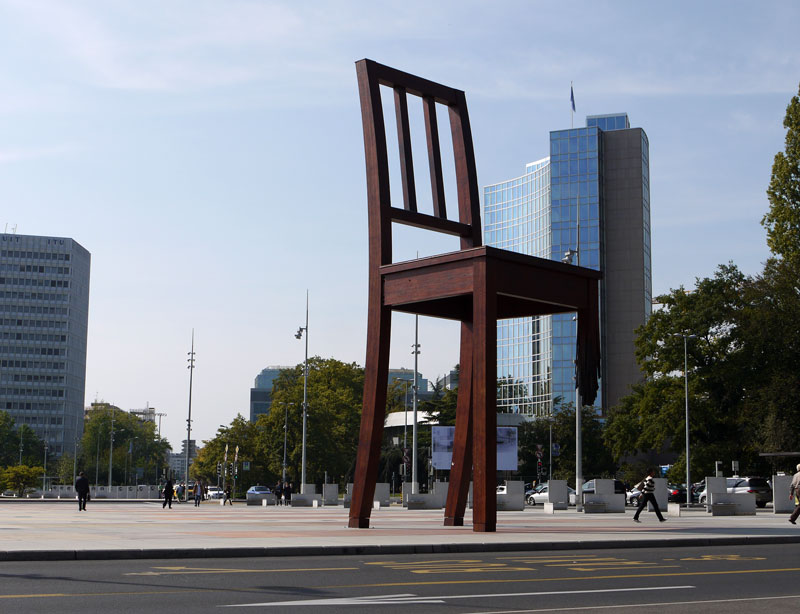
Erected in August 1997 by Swiss artist Daniel Berset for Handicap International Suisse, the Broken Chair Monument was placed outside the Palais des Nations in Geneva to symbolise opposition to land mines and cluster bombs.
Though it was originally displayed for the three months leading up to the signing of the Ottawa Treaty (which banned the use of anti-personnel mines), the refusal of significant countries to sign the treaty prompted the chair to be left in place.
There is a giant fork by Jean-Pierre Zaugg in Lake Geneva.
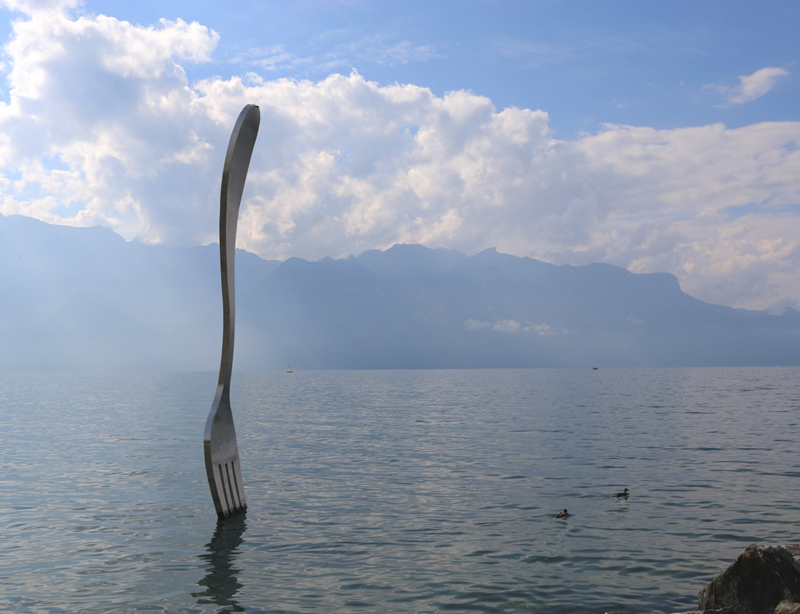
If Brussels has the Manneken Pis and Tate Modern has spider Maman, Vevey has The Fork. The 8 metre-high sculpture, designed by sculptor Jean-Pierre Zaugg, stands tall in Lake Geneva, inviting everyone to take a visual scoop of the beautiful surroundings.
One might wonder, why a fork? Vevey is the birth place of Nestlé, and The Fork was ‘stuck’ into Lake Geneva in 1995 to commemorate the 10 year anniversary of the nearby Alimentarium food museum, once the Nestlé headquarters. Since then, it has become a beloved picture point for the people of Vevey and their visitors.
A Swiss bank has covered an entire district of St Gallen with a red carpet.
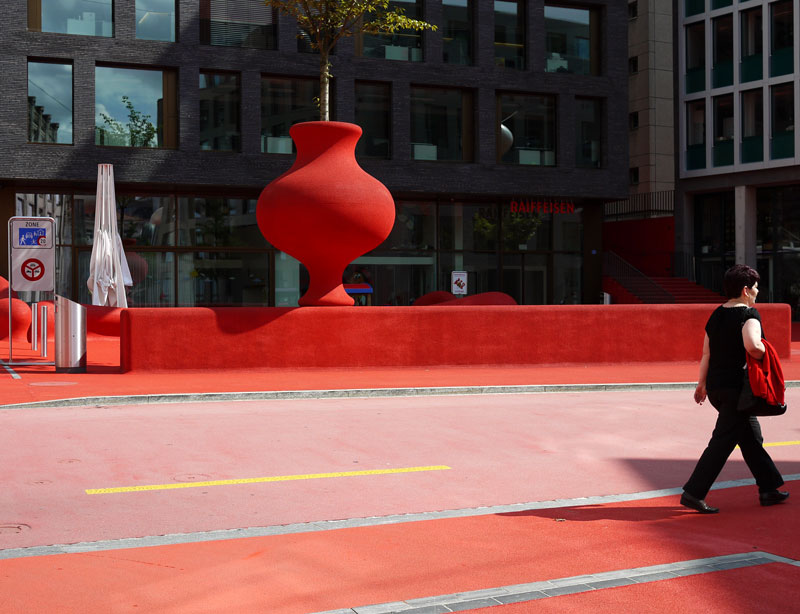
There is a place in St Gallen where every person can feel like a celebrity at a movie awards show. (We are talking about a major red carpet!) Rolled out on three connecting streets, the stadtlounge covers practically every object in its path, including benches, tables, fountains and even cars.
The carefully masked, red streets create a modern, dressy outdoor living room in the middle of St Gallen’s urban landscape.
The A16 freeway dinosaur by Hervé Bénard stands in Courtedoux.
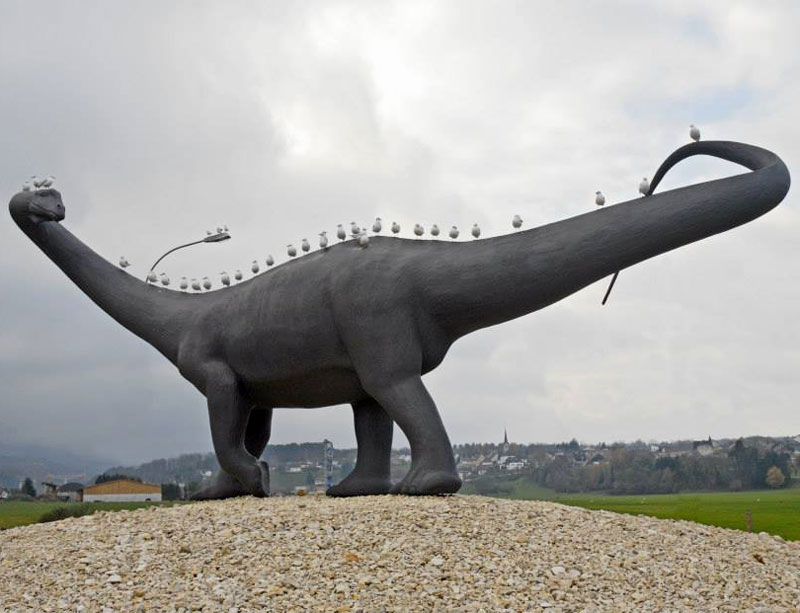
During the excavation work for the A16 transjurane freeway, thousands of signs pointing at the existence of dinosaur populations millions of years ago were discovered. Imagine: The diameter of a dinosaur’s footprint could extend to more than a metre...
In order to pay tribute to the significant findings in the area and to make it easier to imagine what these creatures used to look like, an actual size dinosaur was placed in the middle of a roundabout in Courtedoux. It was designed by Hervé Bénard. The nearby Jurassica museum offers lots of insights and experiences for those interested in palaeontology.
The Caring Hand of Glarus sends a strong message.
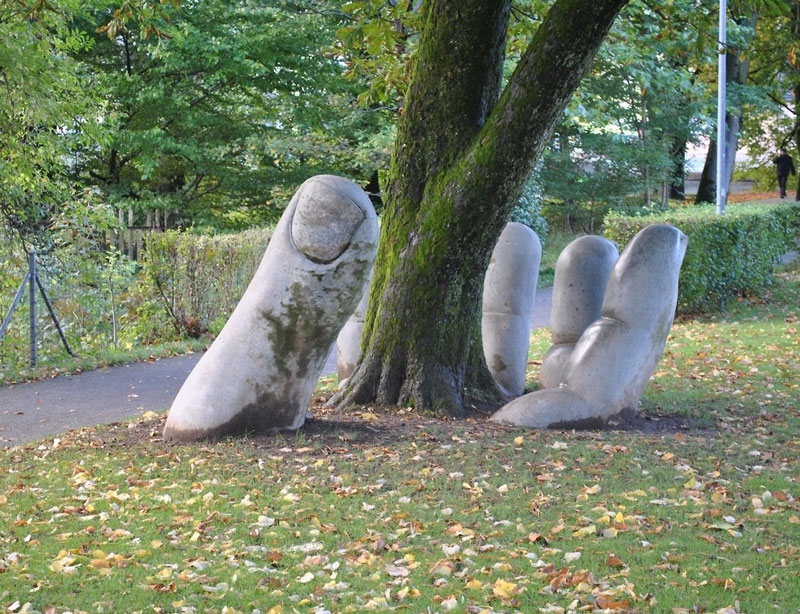
This work by Eva Oertli and Beat Huber is grossly underestimated. This original sculpture rising from the ground and gently wrapping its fingers around a tree sends a message of environmental responsibility and care.
The small yet stunningly beautiful region of Glarnerland where the Caring Hand is located is just one hour away by train from Zurich. And do you think it is a coincidence that Glarus is one of the only two towns in Switzerland where direct democracy is still practiced – by raising a hand?
The Sihl-Ghüür in Zurich is 72 metres long.
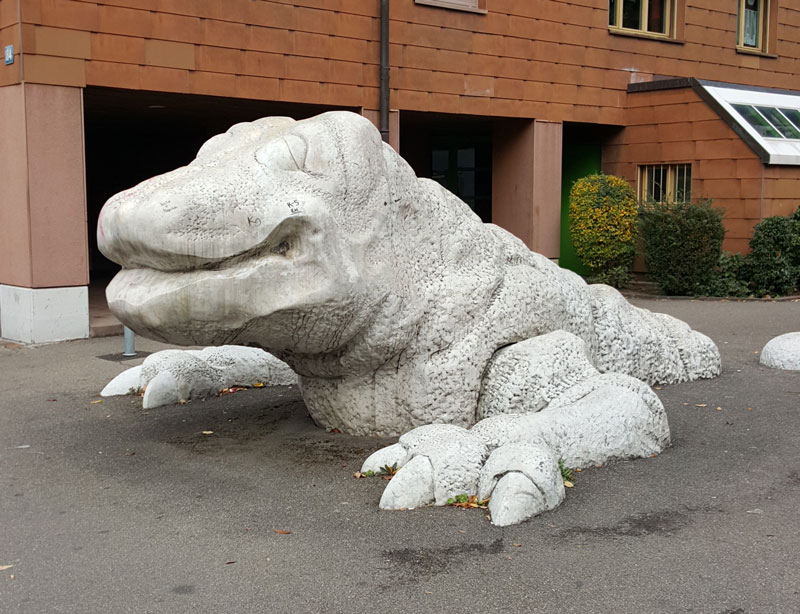
Although it looks a bit rough, there is a harmless character behind Peter Meister’s Sihl-Ghüür creature. It is actually a nice and friendly dragon that helps people from the Limmat retirement home find their way to the nearby tram stop and back.
Its backbones and the tail come out of the ground at the Limmat retirement home 72 metres away from Sihl-Ghüür’s head, making the sculpture the longest architectural artwork in Zurich.
This giant bench by Lilian Bourgeat in Neuchâtel makes you look tiny.

Apart from its great historical heritage, Neuchâtel offers some examples of modern art, too. At the Quai Osterwald, there is a bench so large that it would fit the giant silver lady from Zurich perfectly.
As you sit down on the grande bench, feeling very small indeed, you can enjoy an amazing view of the shimmering Lake Neuchâtel. The enormous bench was created by French artist Lilian Bourgeat who is known for his passion for creating objects that seem to come from a giant’s world.
The next time you walk by some random piece of outdoor art, stop for a moment and carefully look at it. They ask you questions, they are telling you stories. This is why they are there: Not only to be seen, but also to be heard.




